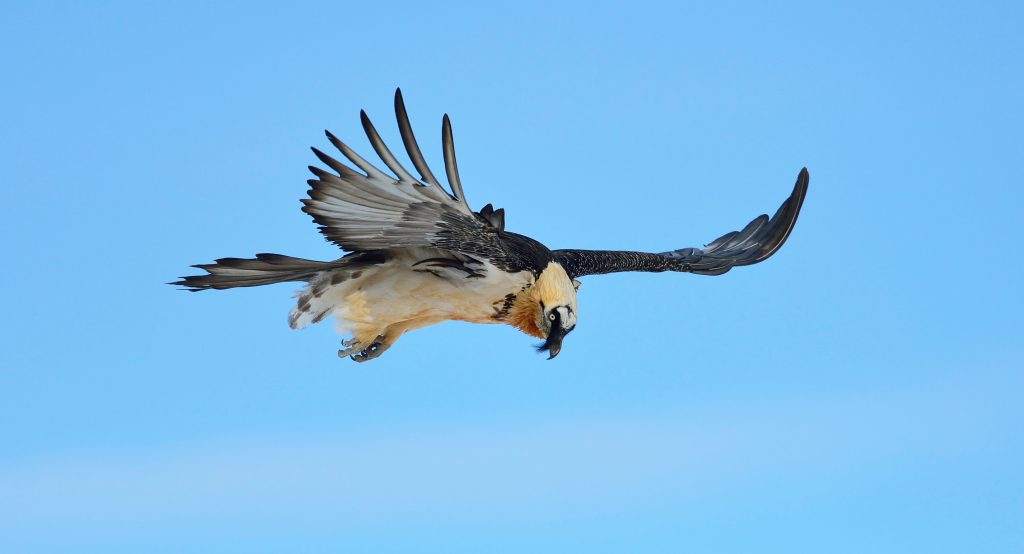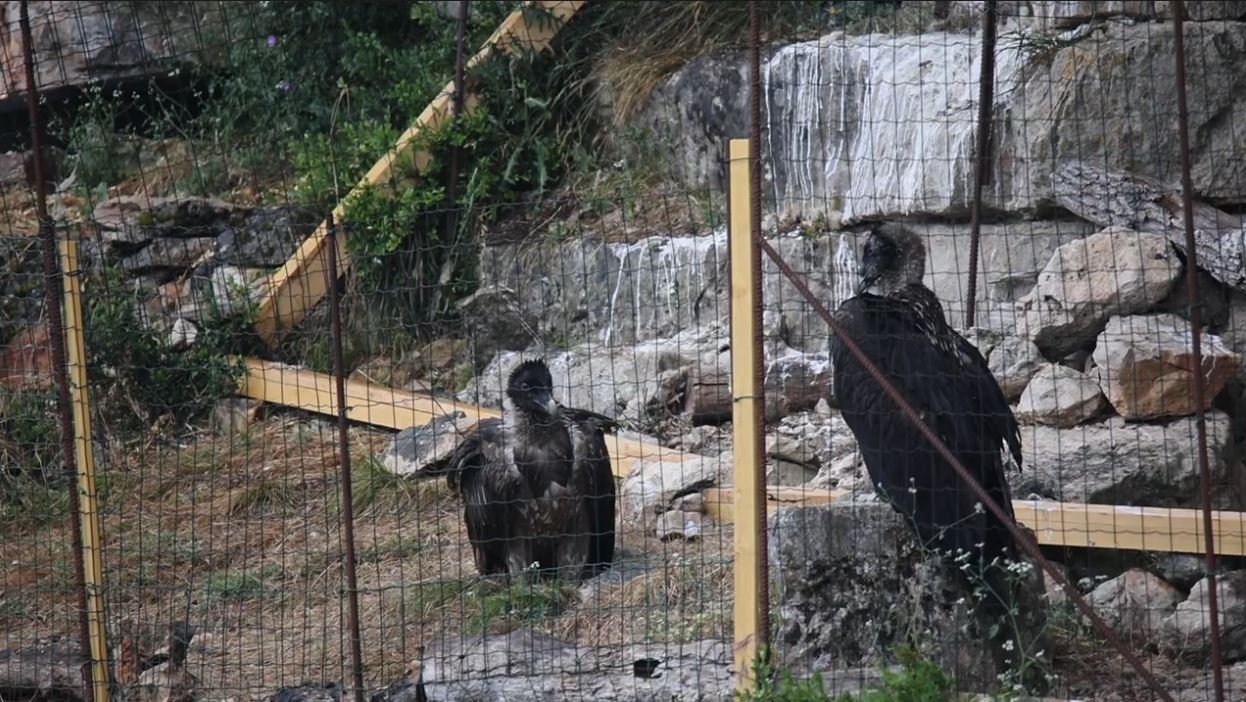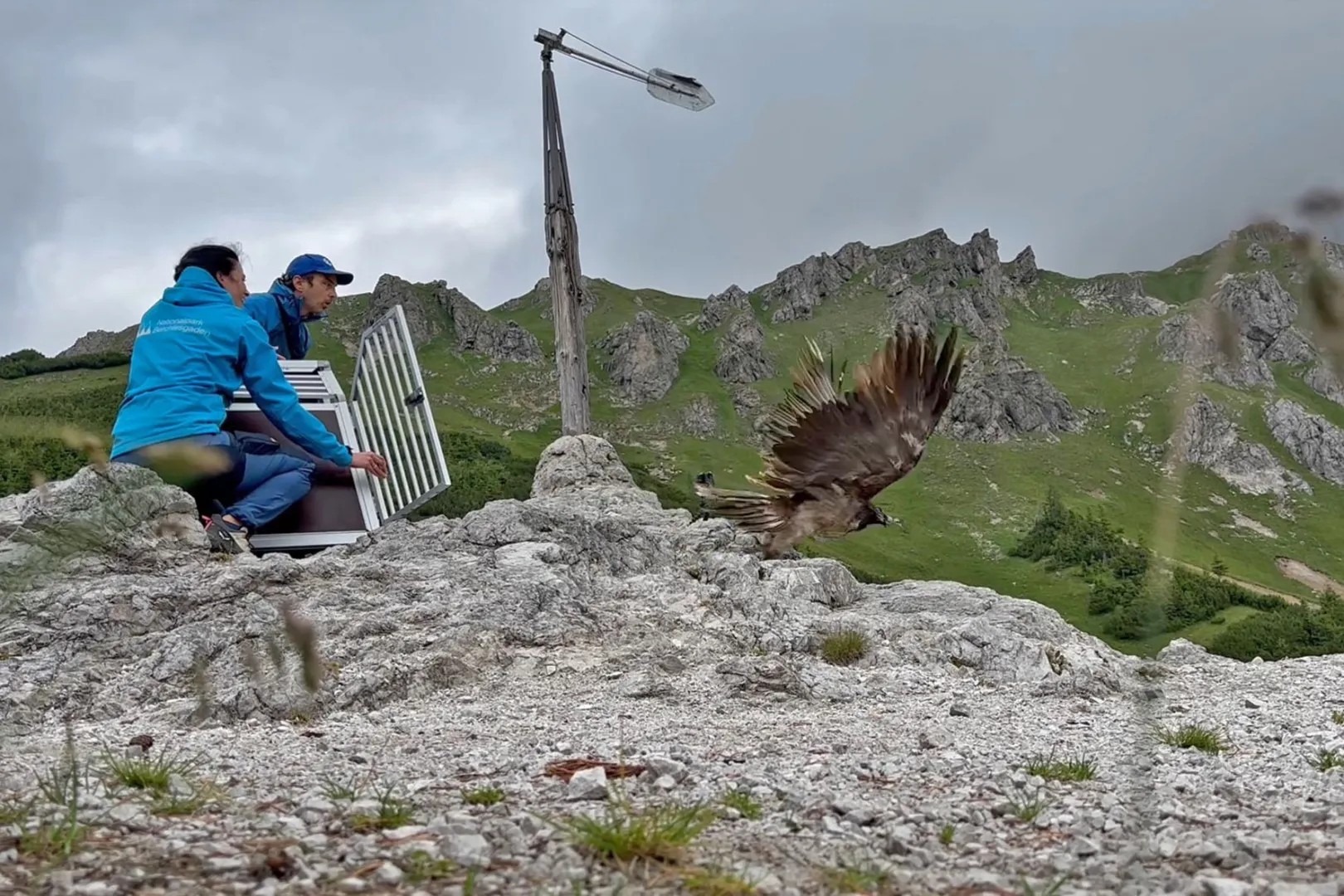Every year, thousands of dedicated volunteers lend their support to monitor Europe’s rarest vulture species. We invite you to participate in the 18th International Observation Days 2023 (IOD) on 14 October and contribute to counting Bearded Vultures (Gypaetus barbatus) across European mountain ranges. This citizen science event count provides valuable insight into ongoing conservation efforts. This article reviews the main results of last year’s IOD; the IOD Report 2022 is now available for download.

Results of the International Observation Days for Bearded Vultures 2022
On 8 October 2022, 1161 volunteers armed with binoculars ventured out in the wild to look for Bearded Vultures. In total, 723 sites across the Alpine Arc, the French Pyrenees and the Massif Central (France), Andalusia and Maestrazgo (Spain), and Bulgaria were monitored. Specifically, on the IOD day, 677 sites were visited by volunteers and 46 additional sites were visited during the week of 8-16 October 2022. This week-long buffer period aimed at increasing the chances of spotting birds where weather conditions were unfavourable during the focal day.

In this 17th edition of IOD, 638 Bearded Vultures were observed, 529 on the focal day (8.10.2022) and 271 on the remaining days.

Bearded Vulture population estimates
The Alpine Bearded Vulture population was estimated to be between 288 and 377 individuals, slightly lower than the estimate of 413 individuals from the demographic model. The age class estimates of the Alpine population are as follows: 61% adults, 4% subadults, 10% immature, and 13% juveniles. The population estimate and age class distribution were determined by analysing observation data gathered on the focal day, supplemented with estimates of unobserved individuals within the specific region, encompassing territorial birds, fledglings, and GPS-tagged birds (N = 80 in 2022), among others.
In the Massif Central, an estimated 6 to 13 individuals were recorded, while in the Aude region of the French Pyrenees, there were approximately 12 to 22 individuals. In Spain, outside of the Pyrenees, the Bearded Vulture populations were estimated to range between ±2 individuals in Maestrazgo and 35-65 individuals in Andalusia and Rioja. As in previous years, Bulgaria remained void of Bearded Vultures, with the species considered extinct since 1972. However, the Bulgarian result is about to change in the upcoming years, as a new LIFE project to bring the species back from extinction has just started.

Calling all nature enthusiasts: Join the International Observation Days 2023!
The International Observation Days started in 2006, firstly only across the Alpine Arc to monitor the successful reintroduction project in the Alps. Throughout the years, as Bearded Vulture reintroduction projects have expanded to other geographies, so has the number of dedicated volunteers joining IOD increased too.
This year, the IOD takes place on 14 October; everyone is invited to join. Bearded Vulture experts will organise monitoring sessions in several observation sites, open to bird enthusiasts and the wider public. Grab your binoculars and embrace this challenge across Europe’s wildest mountains!

The importance of IOD monitoring data
The monitoring data provided during the IOD is fundamental to the ambitious ongoing conservation initiatives across Europe to strengthen and restore Bearded Vulture populations. It enables a better understanding of the species distribution range and generates baseline information for scientists on survival rates and demographic modelling. By helping us collect this monitoring data, you’re providing valuable insight to assess reintroduction projects. Together, we can ensure a bright future for the Bearded Vulture in Europe.

The IOD is a citizen-science activity organised by the International Bearded Vulture Monitoring Network (IBM), coordinated by us at the Vulture Conservation Foundation (VCF). Its success relies on the involvement of dozens of organisations across Europe and the time of thousands of volunteers engaged.
Thank you to all who joined IOD 2022!

Source: Lauper, M & Rauchenstein, K (2023): 17th International Bearded Vulture Observation Days – IOD 2022. Survey report (IBM); ed. VCF



